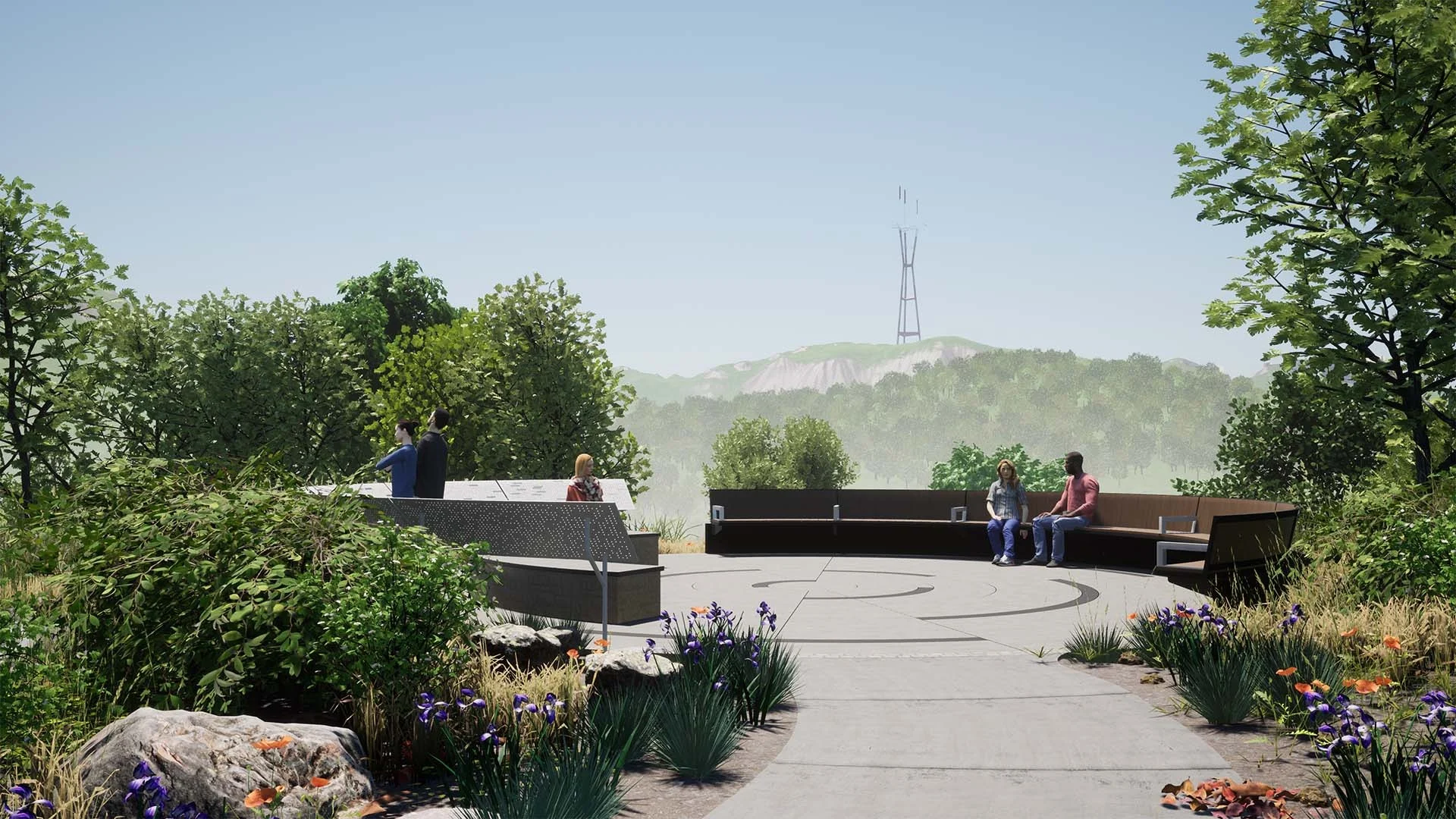
Source: BAYS (Bay Area Young Survivors)
Overview
A public garden opening next month in San Francisco pays tribute to young people who died of metastatic breast cancer. The first such U.S. memorial also exposes a stubborn truth: new drugs have not erased the disease’s deadliest form.
Despite progress with new therapies for breast cancer, young patients with metastatic disease face daunting survival odds
It wasn’t long after a group of women in the San Francisco Bay Area came together to support themselves and other young survivors of breast cancer that the harsh reality of living with metastatic disease started hitting home.
The group, called BAYS, for Bay Area Young Survivors, formed a nonprofit in 2003 and now has more than 2,000 members. The all-volunteer group is now preparing to open on May 3 what they believe is the first memorial in the U.S. dedicated to those who have succumbed to the condition. The milestone follows more than a decade raising roughly $1 million, drafting designs, and persuading city officials after five neighborhood parks rejected the idea.
“Shortly after the organization was founded, its members started dying,” said Nola Agha, a longtime volunteer for the nonprofit and former board member, in an interview with Cure. “We all knew these people who passed away, and we just had this deep desire to memorialize them.”
While much progress has been made in development new treatments for breast cancer since the turn of the century, those who receive a diagnosis after the disease has spread still don’t have many good options.
“There is still no cure for metastatic cancer, and that’s a really important driving factor,” Agha said.
Progress—and the breast cancer survival gap
Breast cancer diagnosis and treatment have evolved markedly since 2000, with early detection rates and therapeutic options expanding significantly. Approximately 63 percent of breast cancers in the U.S. are now diagnosed at localized stages, compared to 56 percent in 2000, contributing to five-year survival rates exceeding 99 percent for these cases, according to the American Cancer Society.
Advances in screening tools, such as AI-enhanced mammography, increased cancer detection by 29 percent without raising the false-positive rate, according to a 2025 study published in The Lancet Digital Health.
On the treatment front, the FDA has approved more than two dozen new breast cancer therapies during the last 25 years, including new classes of medicines such as immunotherapies and targeted agents. These drugs have bolstered outcomes for early-stage patients, but metastatic breast cancer (MBC) remains a persistent challenge.
Median survival for MBC patients stagnates at roughly three years, with only 28 percent surviving beyond five years, per 2025 National Cancer Institute data. Less than 10 percent of clinical trials focus on metastatic disease, the American Cancer Society notes, slowing progress for the estimated 170,000 U.S. patients living with MBC. One study projects that the cost of treating MBC and the lost productivity of patients will have nearly tripled from 2015 to 2030 to $152 billion.
Cancer research at risk
The memorial will open as biomedical funding grows uncertain. The Trump administration’s proposed fiscal-2025 budget would cut National Institutes of Health spending about 40 percent, eliminating thousands of early-stage grants.
At a recent Cure Power of X summit, former White House Cancer Moonshot director Greg Simon warned that slower FDA reviews could cost “15 to 20” drug approvals for unmet conditions in a single year (see “Mayhem, Destruction and Biomedical Tumult from Trump Cuts,”).
The burden of youth: aggressive breast cancer
“While breast cancer is very treatable when it’s diagnosed early, it tends to be much more aggressive in young people and is often caught late, because you don’t have access to screening or doctors don’t believe you,” Agha said.
Pregnancy and early-career pressures compound the toll. Members have delivered babies weeks after diagnosis; others halted graduate programs or left new jobs for treatment, she said. One of BAYS’ founders, Angela Padilla, had been named one of California’s “Top 20 Under 40” lawyers and had recently adopted a baby before her diagnosis with invasive breast cancer in 2002.
An eleven-year fight for a home
Finding a place to mourn was its own marathon. BAYS volunteers hosted bake sales, cold-called philanthropies, and leaned on pro-bono architects. They drew up plans for pocket parks, only to see homeowner groups balk.
“Working our way through all the government approvals and agencies was a real challenge,” Agha said. “It’s not something that anybody in our organization had experience with.”
The stalemate broke when San Francisco Recreation and Park officials offered a site in Golden Gate Park, the city’s equivalent to New York’s Central Park. Landscape designers tucked a curving path and seating circle among coast live oaks and ceanothus. Bronze plaques bear names of 109 BAYS members, each one a life cut short.
A place—and a reminder
Visitors who follow the new path will pass arcs engraved with journal entries from BAYS members and arrive at a low stone wall designed for reflection. Volunteers plan quarterly workdays to keep the native plantings healthy; families from across the country have already asked how to add names.
Agha hopes larger institutions will replicate the idea on a national scale.
“We would love a place where anyone who died of metastatic breast cancer could be remembered,” she said.








